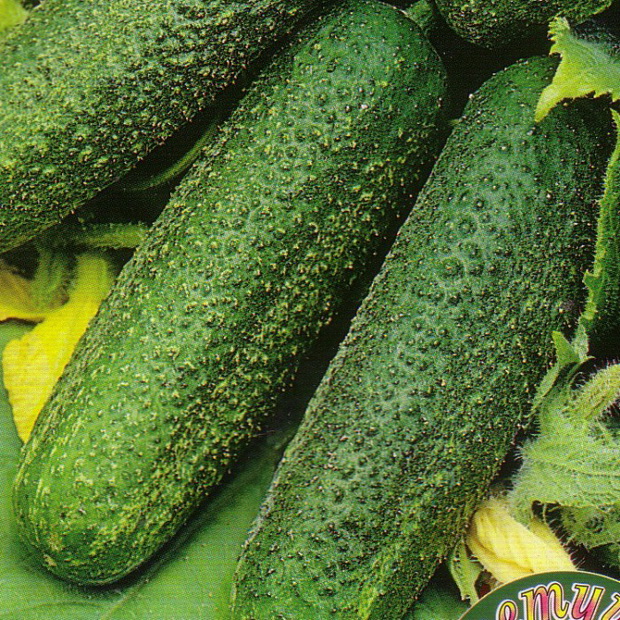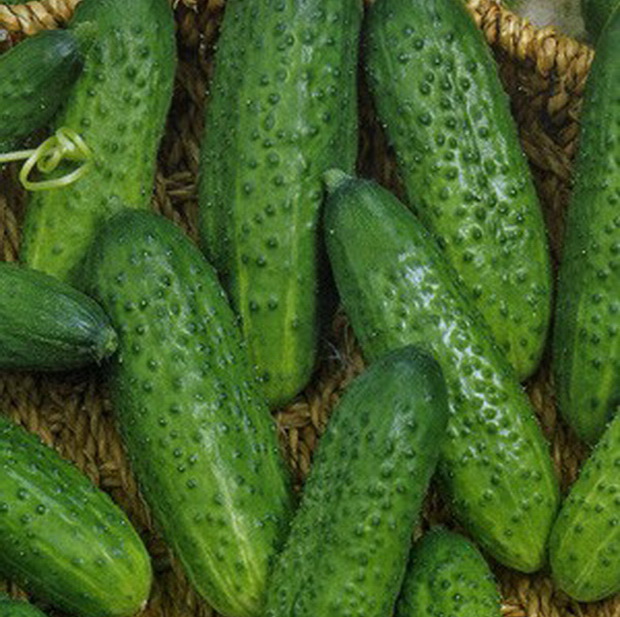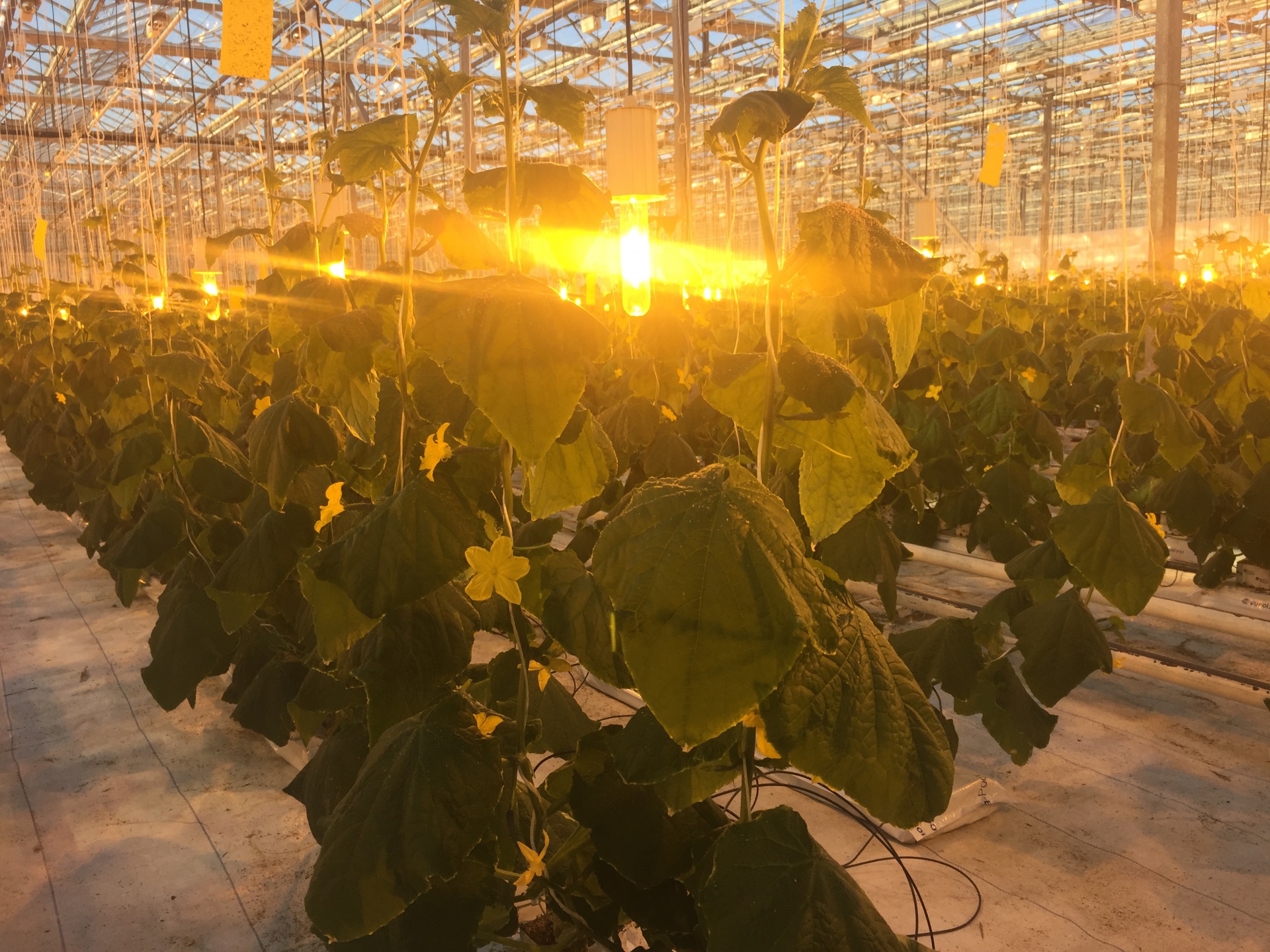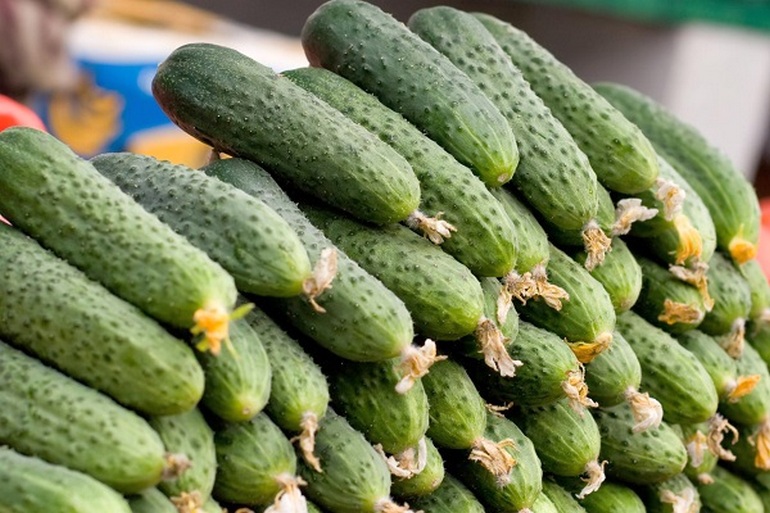Cucumber Harmonist f1 bred by breeders of the company "Gavrish". The hybrid is included in the register of the Russian Federation. This variety of cucumbers can be grown in the southern regions and central Russia. In Siberia, in the Urals, in the lower reaches of the Volga River and in the northern regions of the country, the Harmonist hybrid can grow well in winter greenhouses and spring greenhouses.
Description and characteristics
Cucumber Harmonist belongs to the parthenocarpic varieties. It is capable of bearing fruit without insect pollination.
This garden culture is characterized by the following signs and properties:
- the formation of ovaries in bunches;
- fruit ripening occurs after 40-43 days from the appearance of full-fledged shoots;
- bushes with medium climbing;
- the central stem grows up to 2 m long;
- young leaves are painted in a bright herbaceous green shade, and the finally formed ones have a dark green color;
- long fruiting period;
- the taste of zelents is completely devoid of a bitter aftertaste;
- cucumbers of the Harmonist variety are suitable for preparing raw salads and any type of preservation;
- the weight of the fruit ranges from 100 to 120 g;
- the cucumbers are bright green with light stripes visible up to about one third of the length of the fruit.
From one square meter with good care, you can collect from 12 to 14 kg of fruits.
Basic rules of care
In the south of the country, this varietal hybrid can be grown in open beds of personal plots and under a film cover. However, the fruits of parthenocarpic cucumbers have an attractive presentation only if the cucumbers are grown indoors. On garden beds, greens can be deformed, such a crop is not suitable for sale.
Sowing seeds for seedlings
Cucumber seeds are sown depending on the region and the cultivation method. For household plots of the Krasnodar Territory, seeds are planted for seedlings in early March. If this parthenocarpic is supposed to be grown in a heated greenhouse, any month of the year is suitable for sowing.
It is convenient to grow seedlings in special peat pots. If there are none, then disposable plastic cups will do.
The containers are filled with a nutrient mixture prepared from:
- peat - 2 kg,
- deciduous humus - 2kg,
- wood ash - 1kg,
- sand - 0.5 kg.
Ready-made soil mix can be purchased at a specialized store.
Before use, the soil is disinfected in one of the available ways:
- steamed in the oven;
- watered with manganese solution.
Seeds are spread in holes to a depth of 1 to 1.5 cm and sprinkled with a thin layer of soil and covered with foil. In hybrids, the first shoots appear quickly enough. As soon as the first shoots appear, the film must be removed.
Plant transplant
Seedlings are transplanted into open ground only after the soil has warmed up enough, and plants can be planted on a garden bed in a closed greenhouse immediately after the first two or three full leaves appear.
In the southern regions, before planting the bushes, a deep bed of the type of a long trench is prepared. The depth of the bed should be from 15 to 25 cm. Protective chemical agents against insect pests are poured at the bottom, and then the bed is poured with water. The next day, after watering, you can see bear minks and other harmful insects on the bottom and side walls of the garden. They re-lay protective equipment.
Wood ash and mineral fertilizers are added to the soil, and only after that peat pots are planted in the soil along with sprouts.
When planting plants in a greenhouse, all methods of soil preparation remain the same as for open ground. The beds in greenhouse shelters are made high, enclosing them with boards dug into the ground. The aisles can be covered with dense black polyethylene.
Watering
Such a deep bed is very convenient for regions with hot and dry climates. Watering plants planted in trenches is very convenient. Water is simply poured into the grooves with a hose until the soil is completely saturated with water. Watering is carried out in the evening as the soil dries up.
In such long, deep beds, the soil dries out much longer, and the roots of the plants are completely shaded by foliage. For regions with a rainy climate, this form of planting cucumbers is not suitable.
Top dressing
Parthenocarpic greenhouse cultivars respond to organic fertilizing with increased yields.
You can make such a fertilizer yourself; for this purpose, you need chicken droppings or mullein. Undiluted manure should not be poured onto the beds.
Fertilizer is prepared as follows:
- 1 kg of the product is diluted in 10 liters of water;
- the solution is left to infuse for two days;
- the resulting fertilizer is mixed with an infusion of herbs (nettle, celandine).
500 ml of organic mixture is poured under each root. In addition to organic matter, mineral fertilizers containing phosphorus and nitrogen must be added to the soil.
To improve the assimilation of nutrients by plants, the soil must be watered before fertilizing.
Bush formation
The bushes growing in the garden beds are formed in the classical way. To do this, remove all lateral branches and flowers from the first 3-4 leaf sinuses. The stepchildren of cucumbers The Harmonist is removed from the main stem to a height of 60 cm. Above this mark, the lateral shoots are pinched every 2-3 leaf sinuses. After 1.5 times the height of the central stem, stepsons are removed after 4-5 leaves.
Benefits of the variety
The hybrid has a number of positive qualities, it:
- resistant to common infectious diseases;
- gives a bountiful harvest;
- tastes good without bitter taste;
- fruits are stored for a long time and are suitable for transportation over long distances;
- does not require complex maintenance.
All these qualities make him a welcome guest in the garden beds.

















